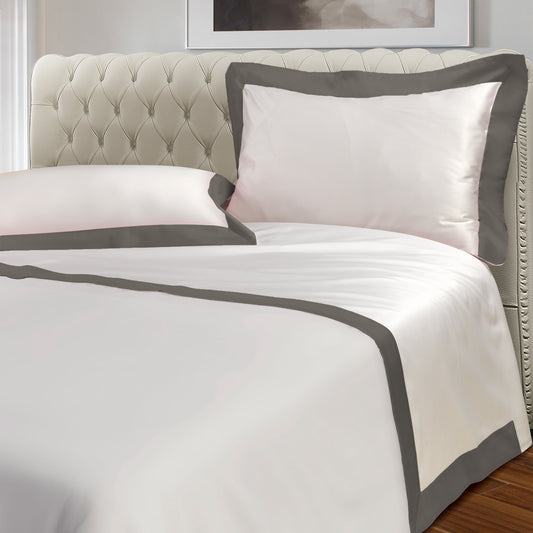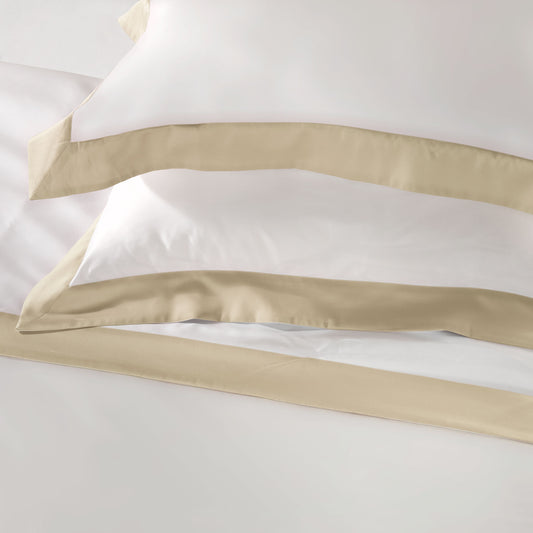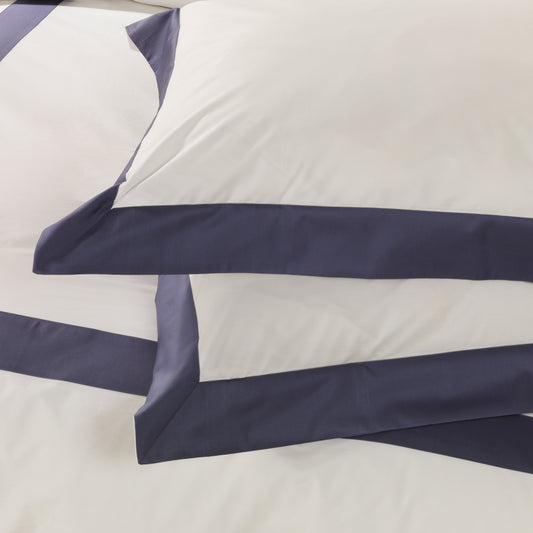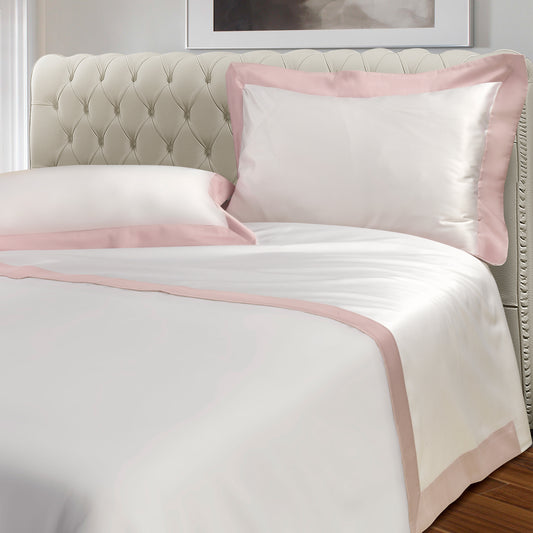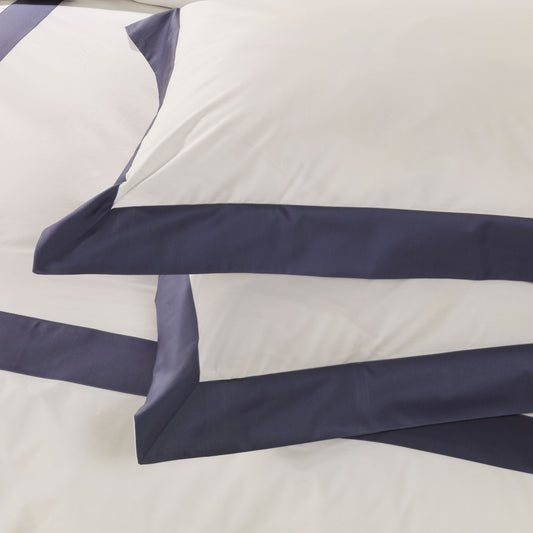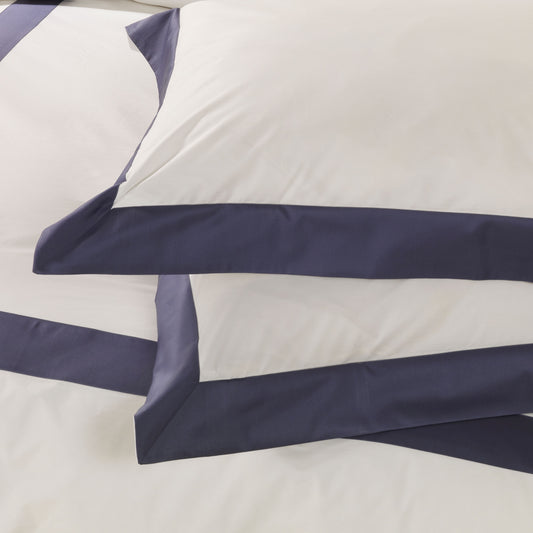Cotton satin
To rediscover the origins of satin, it is necessary to retrace the Silk Road, backwards in space and time, up to the imperial China of the northern Song dynasty, between 960 and 1127. A weaving with a millenary tradition, widespread among the imperial nobility, which arrived in Europe in the Middle Ages.
Satin reaches the European nobility as a background for damask, brocade and lampas: heavy, structured and sumptuous fabrics. It is also known as satin fabric , from "Zeitun", the Arabic transliteration of the Chinese city Zhangzhou from which it is believed to have come.
Famous for its shiny and silky appearance, its weaving foresees a prevalence of the warp with binding stitches with sparse and regular wefts. The higher the number of threads per square centimeter (unit of measurement indicated in TC), the better the quality of the fabric.

Cozy in winter and light in summer, the touch of satin is an excellent choice for year-round bed linen. Not only is it delicate even on the most sensitive skins, but it is light, breathable and guarantees a comfortable rest. The silky and impalpable texture of the cotton satin minimizes friction, preventing irritation and micro-injuries to the skin; this feature has many benefits for the care of the skin of the face, but also of the hair, minimizing the frizz effect and the number of hairs broken during the night.
Cotton satin differs from other types of satin because the long, or extra long, and cohesive fiber yarn allows an even tighter knit and an extremely light, soft and almost fluid-looking result. More resistant than silk, but just as fresh and delicate on the skin, cotton satin allows you to create haute couture products.


